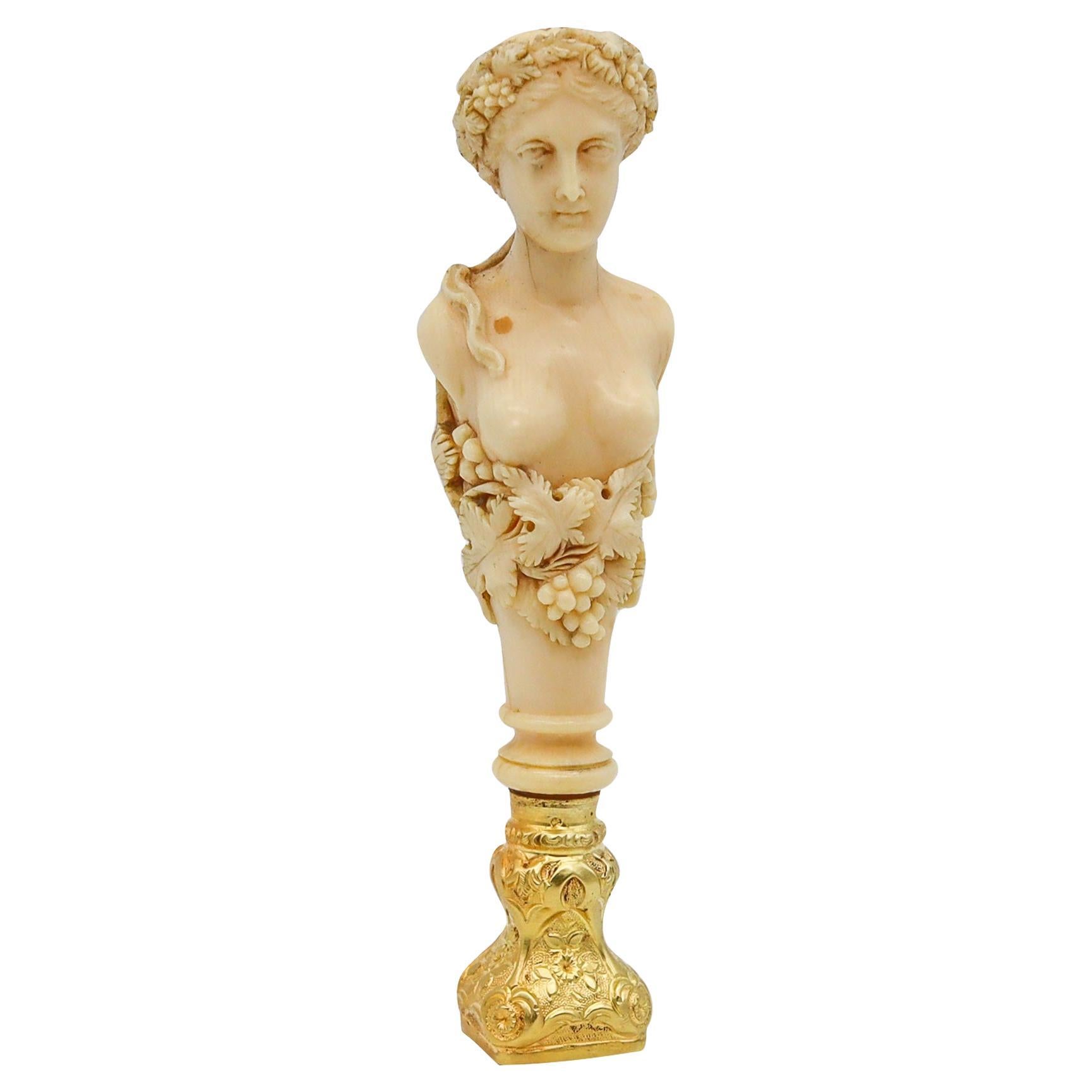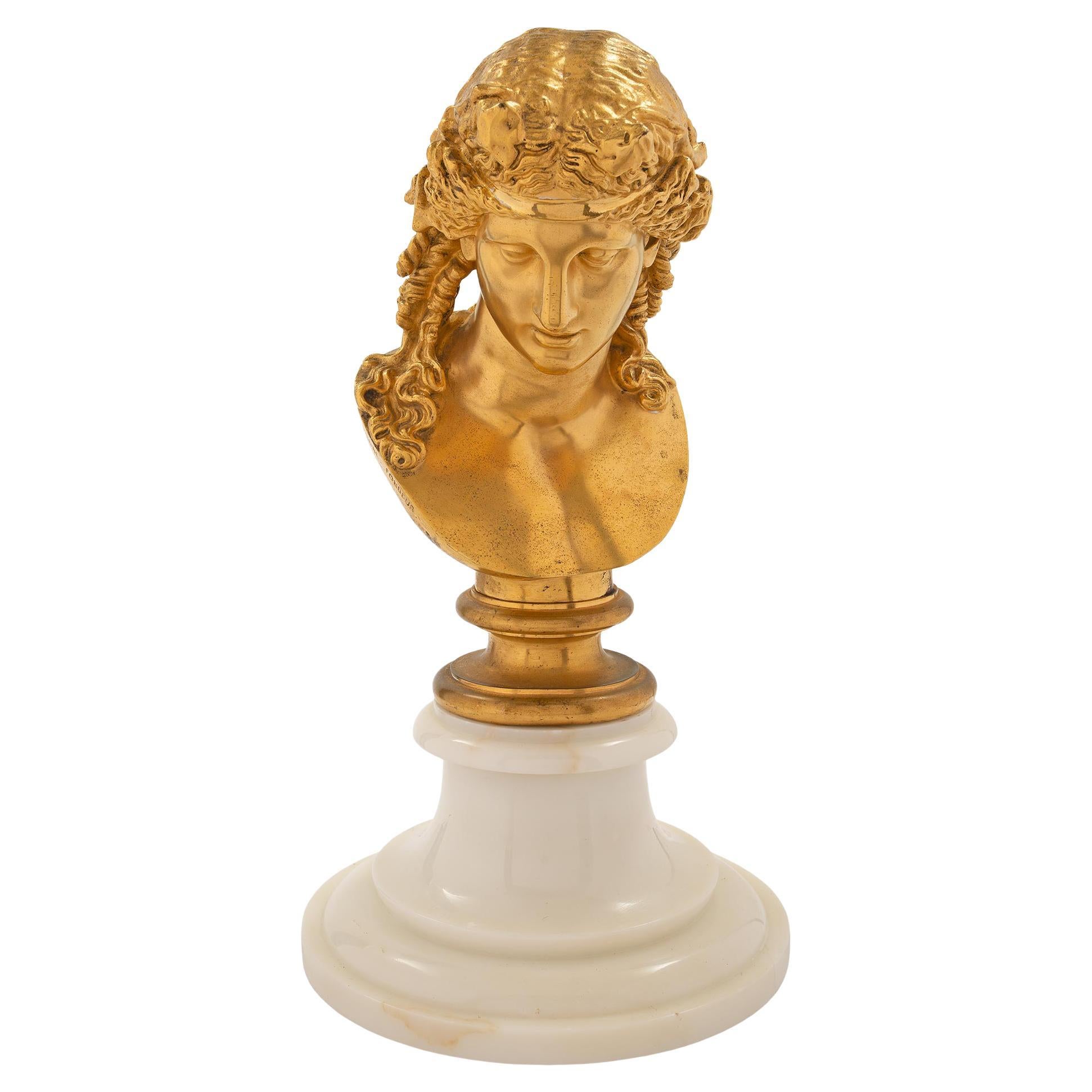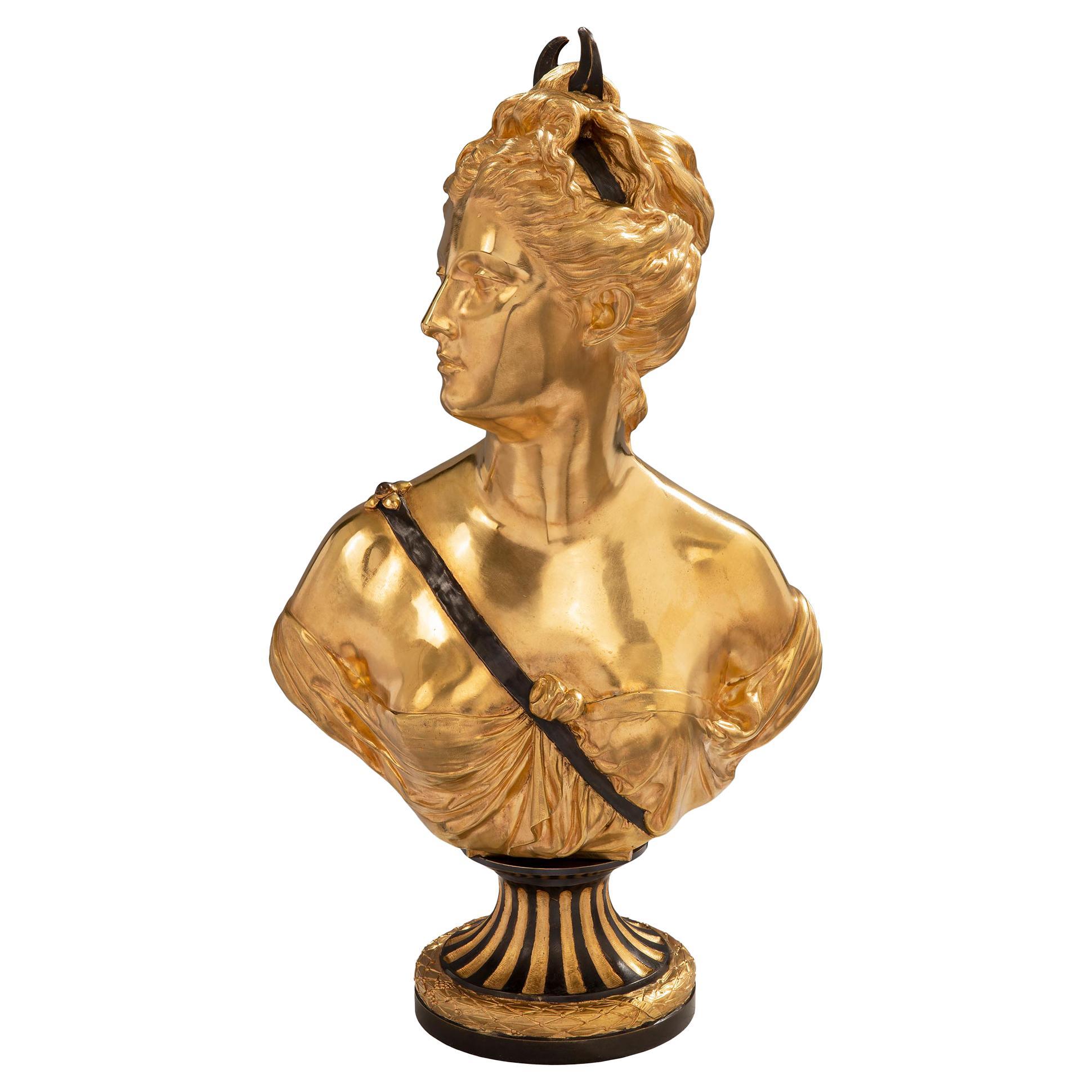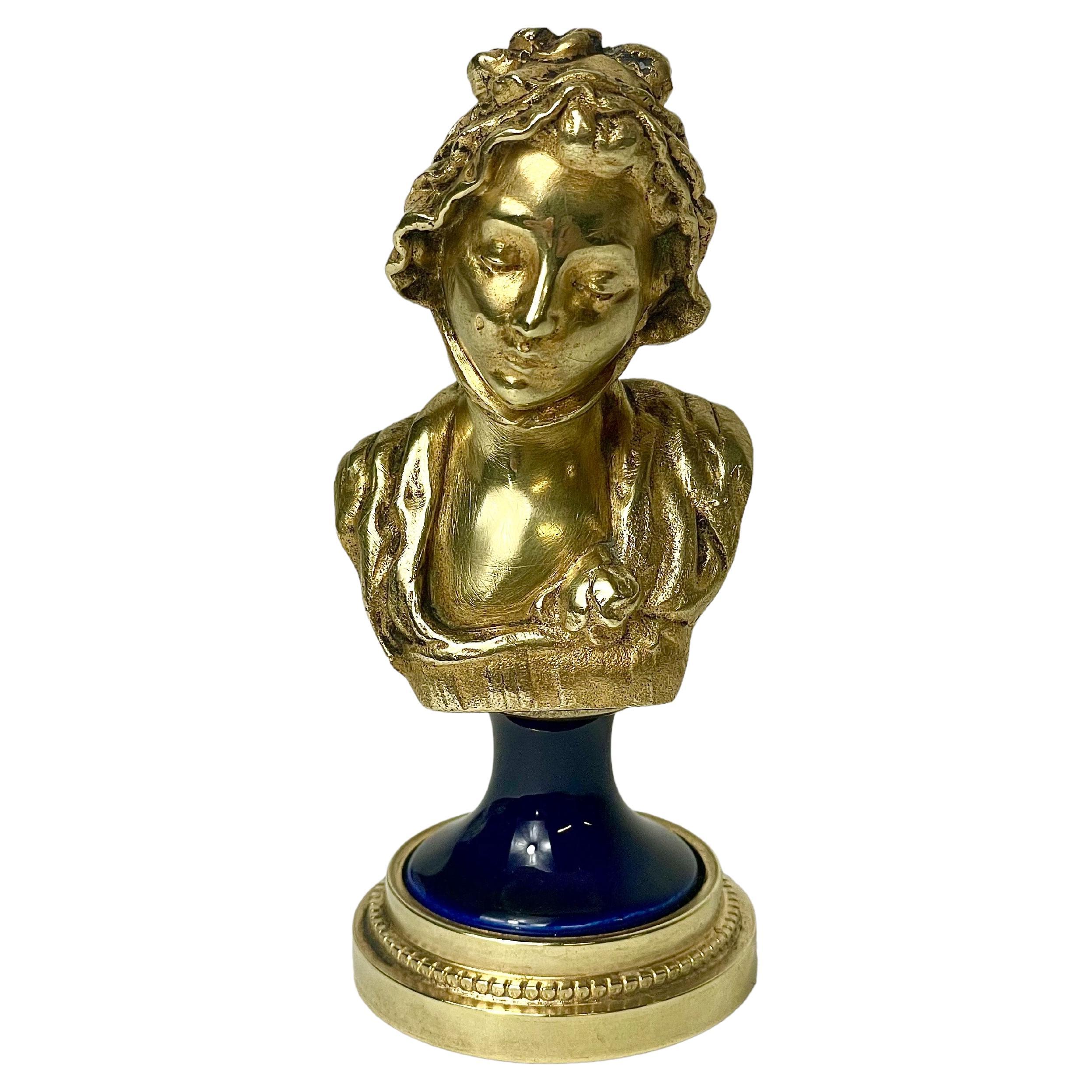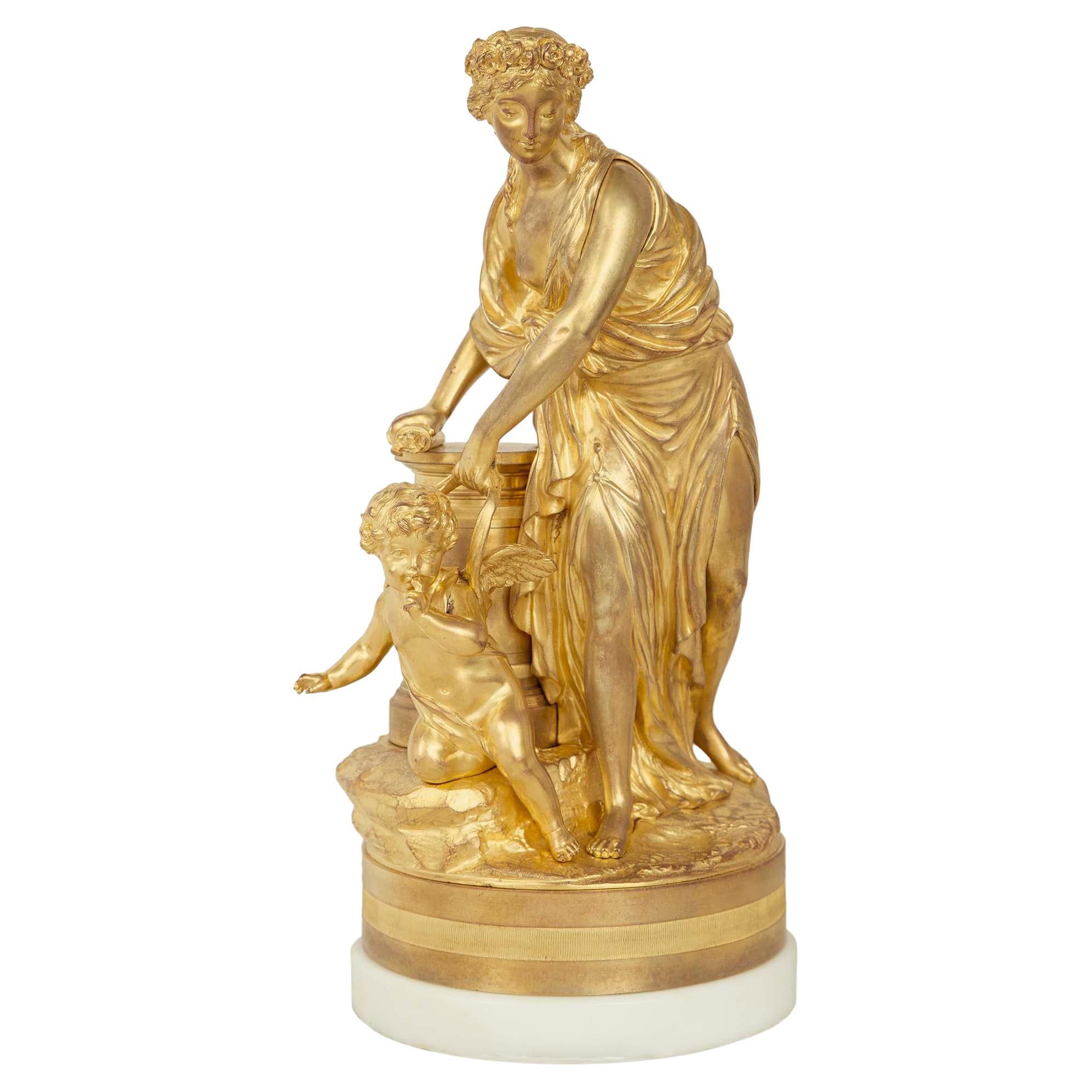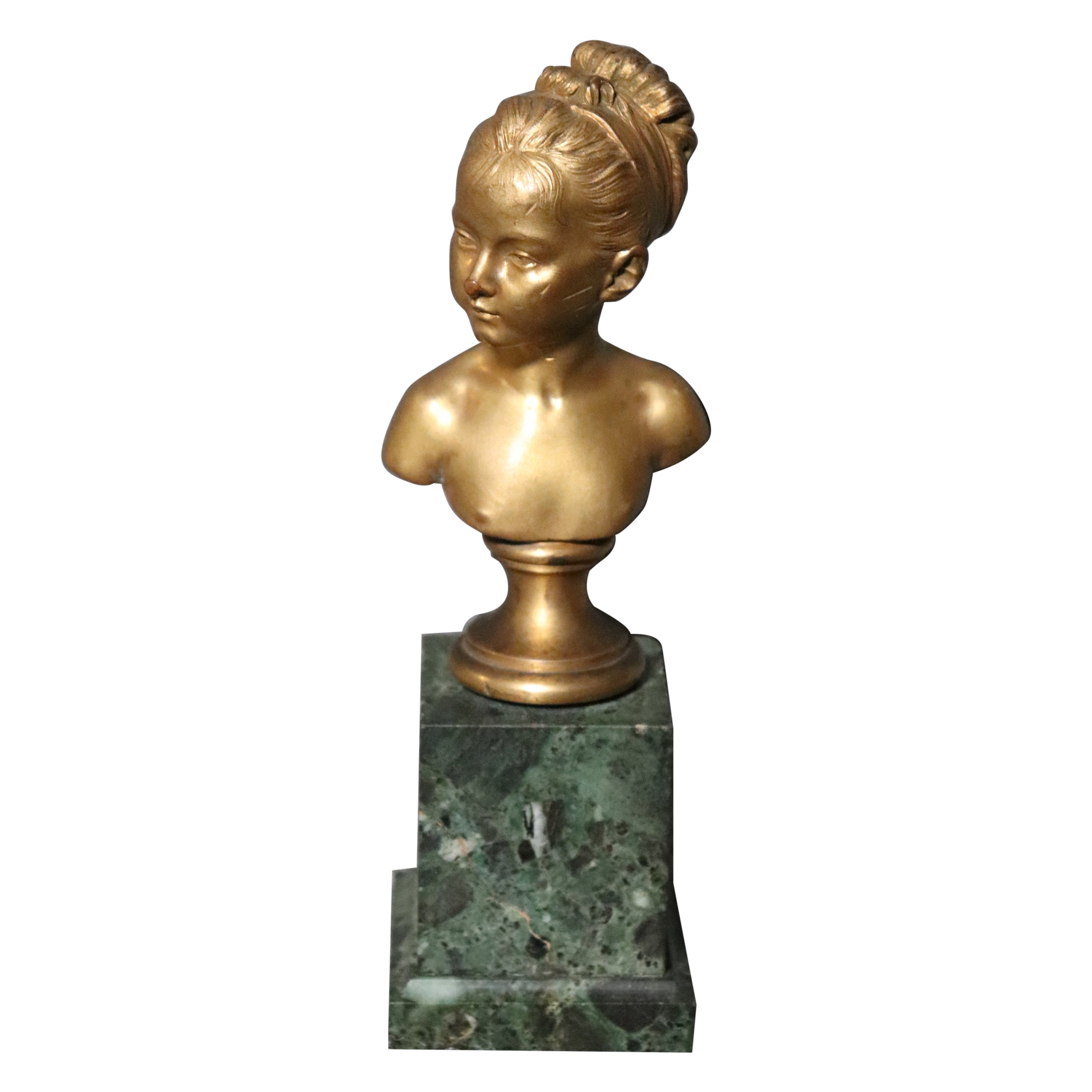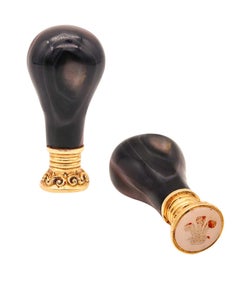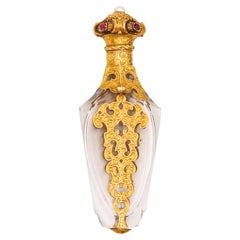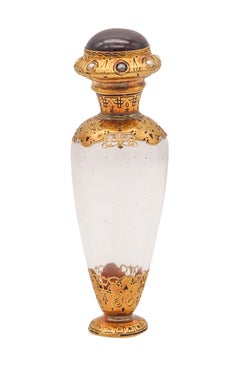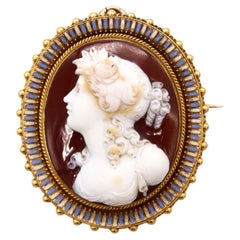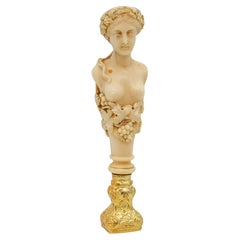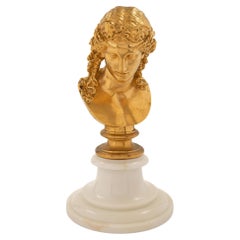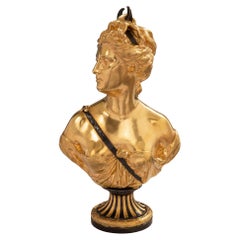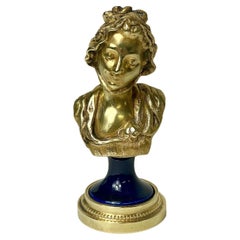Items Similar to French 1798 Neo Classic Stamp Seal in 18kt Gilded Silver with Carved Bust Flora
Want more images or videos?
Request additional images or videos from the seller
1 of 9
French 1798 Neo Classic Stamp Seal in 18kt Gilded Silver with Carved Bust Flora
$3,028
$3,78520% Off
£2,299.23
£2,874.0420% Off
€2,629.34
€3,286.6820% Off
CA$4,230.56
CA$5,288.1920% Off
A$4,705.30
A$5,881.6320% Off
CHF 2,456.96
CHF 3,071.2020% Off
MX$57,258.50
MX$71,573.1320% Off
NOK 31,379.15
NOK 39,223.9420% Off
SEK 29,428.11
SEK 36,785.1420% Off
DKK 19,623.80
DKK 24,529.7520% Off
Shipping
Retrieving quote...The 1stDibs Promise:
Authenticity Guarantee,
Money-Back Guarantee,
24-Hour Cancellation
About the Item
French neo classic desk seal.
Wonderful desk seal, created in France during the late 18th century, back in the 1798-1808. This magnificent piece of art was conceived as a miniature sculpture mounted in a Louis XVI neoclassical style base. This base is crafted in 18 karats gold over silver with chiseled and incised decorations, supporting a magnificent extremely detailed carving of a women. The carved piece, depicts, the naked portrait bust of the classical Greek-Roman goddess of the flowers and nature Flora (Heba), facing forward and exhibiting her breasts, undressed and crowned with flowers, wheat and ivy.
Flora or Heba
She was the deity of the flowering plants, fertility, spring, and blossoming. Although she was a minor figure compared to other goddesses of the Roman empire, she was important as a fertility goddess. Flora was responsible for the abundance of the crops in spring, so her worship strengthened as this season approached. Her name derives from the Latin floris, which means flower, and her Greek counterpart was the nymph, Chloris. The Sabine King Titus Tatius introduced Flora into the Roman pantheon.
Weight: 51.95 Grams, (33.31 Dwt).
Measurements: 114 mm by 30 mm by 18 mm (4.5 x 1.18 x 0.72 Inches).
Hallmarks: Stamped with French marks, the early mark of a cock inside an oval with the number 2 for the assay and the warranty of the silver and the maker's maitre mark EP inside a lozange cartouche.
Note: This mark was only used between the 1798 and 1808
Collateral: It is accompanied by a presentation jewelry pouch.
Condition: The overall condition of this piece is excellent. Beside the little normal wear, there is no damage to the parts. This desk seal has been carefully inspected to guarantee the condition and authenticity.
INVENTORY REF: P021523RNNK/1.540
- Creator:French Louis XVI
- Metal:
- Weight:51.95 g
- Dimensions:Width: 1.18 in (29.98 mm)Depth: 0.78 in (19.82 mm)Length: 4.5 in (114.3 mm)
- Style:
- Place of Origin:
- Period:1790-1799
- Date of Manufacture:1790
- Condition:Wear consistent with age and use. The overall condition of this piece is excellent. Beside the little normal wear, there is no damage to the parts. This desk seal has been carefully inspected to guarantee the condition and authenticity.
- Seller Location:Miami, FL
- Reference Number:Seller: P021523RNNK/1.5401stDibs: LU2690218443482
About the Seller
5.0
Recognized Seller
These prestigious sellers are industry leaders and represent the highest echelon for item quality and design.
Platinum Seller
Premium sellers with a 4.7+ rating and 24-hour response times
Established in 1995
1stDibs seller since 2022
915 sales on 1stDibs
Typical response time: <1 hour
- ShippingRetrieving quote...Shipping from: Miami, FL
- Return Policy
Authenticity Guarantee
In the unlikely event there’s an issue with an item’s authenticity, contact us within 1 year for a full refund. DetailsMoney-Back Guarantee
If your item is not as described, is damaged in transit, or does not arrive, contact us within 7 days for a full refund. Details24-Hour Cancellation
You have a 24-hour grace period in which to reconsider your purchase, with no questions asked.Vetted Professional Sellers
Our world-class sellers must adhere to strict standards for service and quality, maintaining the integrity of our listings.Price-Match Guarantee
If you find that a seller listed the same item for a lower price elsewhere, we’ll match it.Trusted Global Delivery
Our best-in-class carrier network provides specialized shipping options worldwide, including custom delivery.More From This Seller
View AllEdwardian 1900 Agate Desk Seal In 18Kt Gold With The Arms of The Prince of Wales
Located in Miami, FL
Desk seal with the arms of the Prince of Wales.
Very rare and unusual desk seal, created in England during the Edwardian period, back in the early 1900's. This seal feature the arms of the Prince of Wales and is composed by the agate pommel, carved with smooth surfaces and the round mount setting crafted in yellow gold of 18 karats with scrolls decorations. The seal depicts three feathers aligned over a crown, carved with incised intaglio in natural white agate.
Gemstones: The handle pommel is carved from a single piece of brown translucent agate with bluish veins.
Weight: 14.95 Grams, (9.58 Dwt).
Measurements: 41 mm by 19 mm (1.61 x 0.75 Inches).
Hallmarks: No marks, electronically tested for 18 karats gold.
Arms of Prince of Wales
The Prince of Wales's feathers – Almost History
The coat of arms of the Prince of Wales is the official personal heraldic insignia of the Princes of Wales, a title traditionally granted to the heir apparent of the reigning monarch of the United Kingdom of Great Britain and Northern Ireland, formerly the Kingdom of Great Britain and before that the Kingdom of England. Since Edward I awarded it to his son the future Edward II, the heir apparent to the English throne has been created with the title Prince of Wales. The history of the coat of arms is closely linked with those of the Royal coat of arms of England and the Royal coat of arms of the United Kingdom. However, as the noted antiquarian and heraldist Charles Boutell wrote in 1863, "The Arms of the Prince of Wales have a distinct individuality of their own, with which nothing ought to be directly associated".
History
The badge has no connection with the native Princes of Wales. Its use is generally traced back to Edward, the Black Prince (1330–1376), eldest son and heir apparent of Edward III of England. Edward bore (as an alternative to his differenced royal arms) a shield of Sable, three ostrich feathers argent, described as his "shield for peace", probably meaning the shield he used for jousting. These arms can be seen several times on his chest tomb in Canterbury Cathedral, alternating with his royal arms (the royal arms of King Edward III...
Category
Antique Early 1900s English Edwardian Desk Accessories
Materials
Agate, Gold, 18k Gold, Yellow Gold
$3,188 Sale Price
20% Off
Free Shipping
French 1820 Baroque Rock Quartz Scent Perfume Bottle Mount 18k Gold with Gems
Located in Miami, FL
French scent bottle with gemstones.
Gorgeous antique scent perfume bottle, created in France in the first quarter of the 19th century, circa 1820....
Category
Antique 1820s French Neoclassical Vanity Items
Materials
Pearl, Natural Pearl, Quartz, Ruby, Gold, 18k Gold, Yellow Gold
$4,798 Sale Price
20% Off
Free Shipping
French 1870 Napoleon III Perfume Bottle Mount In 18Kt Yellow Gold With Gemstones
Located in Miami, FL
French scent bottle with gemstones.
Gorgeous antique scent perfume bottle, created in Paris France during the imperial period of Napoleon III, back in the 1860. This exceptional bot...
Category
Antique 1860s French Napoleon III Vanity Items
Materials
Garnet, Pearl, Natural Pearl, Gold, 18k Gold, Yellow Gold, Enamel
$3,800 Sale Price
20% Off
Free Shipping
Austrian 1840 Vienna 22Kt Flora Etruscan Revival Pendant In Agathe With Enamel
By Viennese Manufactory
Located in Miami, FL
Viennese 1840 Etruscan revival agate cameo of Flora.
This fabulous rare Austrian piece features a tree-dimensional cameo piece, carved from two layers of natural agate, with gradati...
Category
Antique 1840s Austrian Etruscan Revival Pendant Necklaces
Materials
Agate, Yellow Gold, Enamel, 22k Gold
$6,388 Sale Price
20% Off
Free Shipping
Austrian 1870 Vienna Carved Agate Cameo of Heba in 18kt Yellow Gold with Enamel
Located in Miami, FL
An Austrian carved agate cameo of Heba.
This piece feature a fabulous three-dimensional cameo piece, carved from a two layered natural agate, with gradations of colors; from translucent orange brown to frosted white.
The quality of the carving is exceptional, with intricate thorough details. for example, the ear and the incised lines of the hair are magnificent. The carving depicts, the naked...
Category
Antique 1870s Austrian Neoclassical Brooches
Materials
Agate, Gold, 18k Gold, Yellow Gold, Enamel
$6,360 Sale Price
20% Off
Free Shipping
Emil Biedermann 1867 Austrian Important Presentation Agate Pendant in 19Kt Gold
Located in Miami, FL
A highly important Austrian pendant-brooch in 19 Karats by Emil Biedermann (1830-1900).
An exceptionally rare and gorgeous over sized presentation cameo piece, created in Vienna in 1867 by Emil Biedermann. The Biedermann jewelry house, was located in the number 13 of the popular aristocratic Graben street. They was granted in 1850, by the emperor Franz Joseph I (1830-1916), with the Austrian Imperial House Warrant, appointing the jewelry house as the purveyors to the court and "Kammerlieferant" (Chamber Jeweler).
The company was founded by Michael Lazar Biedermann (born 1769 as Michael Lazar in Bratislava) who at fifteen, was apprenticed to an engraver in Vienna. He became a seal-engraver and adopted the name Biedermann in 1792. He was entrusted, with the engraving of the imperial seals and by 1800 was enabled to open a Jeweler's store in Vienna.
In the last years of his company, Emil Biedermann was also purveyor to the royal Serbian court and to the grand ducal Saxon court.
This piece feature a fabulous three-dimensional cameo piece, carved from a three layered of natural agate, with color's gradations; from translucent orange brown, opalescent gray, to frosted white.
The quality of the carving is exceptional, with intricate thorough details. For example, the ear and the incised lines of the hair are magnificent. The carving depicts, the dressed portrait bust of the classical Greek-Roman goddess, Diana the huntress, facing to the right. Most probably the model used, was the ancient sculpture at the Albertina Museum.
The fabulous mounting frame is crafted in solid rich yellow gold of 19 karats, with geometric Austrian elements. It is suited at the reverse, with a hinged horizontal pin to be wear as a brooch and a flexible removable discrete adapter to be used into a chain.
This piece have a total weight of 72.9 grams and a measures of 77 mm by 80 mm by 28 mm (3.03 x 3.15 x 1.1 inches).
The agate piece is signed at the reverse by the carver-cutter artist (unknown) and numbered 361.
Is stamped with multiples Austrian hallmarks; twice with the mark for Vienna, the Austrian mark for the guaranty of the 19 kt gold...
Category
Antique 1860s Austrian Neoclassical Pendant Necklaces
Materials
Agate, Gold, Yellow Gold
$13,560 Sale Price
20% Off
Free Shipping
You May Also Like
French 1798 Neo Classic Stamp Seal In 18Kt Gilded Silver Carved Bust Of Flora
Located in Miami, FL
French neo classic desk seal.
Wonderful desk seal, created in France during the late 18th century, back in the 1798-1808. This magnificent piece of a...
Category
Antique 1790s French Neoclassical Desk Sets
Materials
Gold, Silver
$3,160 Sale Price
20% Off
French 19th Century Louis XVI St. Ormolu Bust, Signed F. Barbedienne
Located in West Palm Beach, FL
An elegant and high quality French 19th century Louis XVI st. ormolu bust of Venus, signed F. BARBEDIENNE FONDEUR. The statue is raised by a circular mottled white Carrara marble bas...
Category
Antique 19th Century French Louis XVI Figurative Sculptures
Materials
Carrara Marble, Ormolu
French 19th Century Louis XVI Style Ormolu Bust Signed Houdon and Frères
By Susse Freres
Located in West Palm Beach, FL
A striking French 19th century Louis XVI st. ormolu and patinated bronze bust of Diana the Huntress, signed Houdon and Susse Frères. The bust is raised by a striking circular base wi...
Category
Antique 19th Century French Louis XVI Figurative Sculptures
Materials
Bronze, Ormolu
Petite Gilt Bronze and Porcelain Bust of a Young Lady
Located in LA CIOTAT, FR
A lovely gilt bronze bust depicting an elegant young lady, with fashionable frilled bonnet, finely draped clothing and a serene expression. Mounted on a deep blue porcelain and bronz...
Category
20th Century French Louis XVI Busts
Materials
Bronze
French 19th Century Louis XVI Style Ormolu Statue of a Maiden
Located in West Palm Beach, FL
A high quality and most charming French 19th century Louis XVI st. ormolu statue of a maiden with winged cherub signed Musée de Sèvres. The statue is r...
Category
Antique 19th Century French Louis XVI Figurative Sculptures
Materials
Carrara Marble, Ormolu
Ormolu & Marble Bust of Louise Brogniart After Houdon Signed Thiebaut Freres
By Thiebaut Freres
Located in Swedesboro, NJ
Dimensions- H: 6 1/2in W: 2 1/4in D: 2in
This Antique French Ormolu Bronze And Marble bust of Louise Brogniart After Jean Antoine Houdon And Signed Thiebaut Fréres is an incredible example of 19th century french decor...
Category
Antique Mid-19th Century French Louis XV Busts
Materials
Marble, Bronze, Ormolu
More Ways To Browse
18k Gold Seal
Jewellery 1790
Bust Sculpture Goddess
King Louis Desk
Roman Seal
Gold Seals
18k Gold Desk Clocks
Cartier Boxed Pens
Montblanc Ballpoint Pens
Montblanc Limited Edition
Vintage Tiffany Pens
Montblanc 18k
Tiffany And Co Pen
Tiffany Sterling Key Ring
Tiffany Sterling Silver Key Ring
Cartier Ballpoint Pen
Dupont Pen
Silver Tiffany Pen
